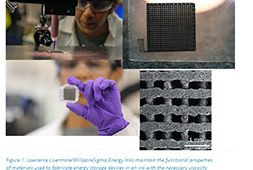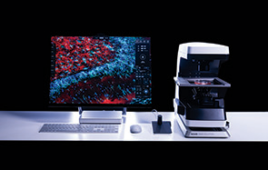
For the first time, researchers have successfully 3D printed chalcogenide glass, a unique material used to make optical components that operate at mid-infrared wavelengths. The ability to 3D print this glass could make it possible to manufacture complex glass components and optical fibers for new types of low-cost sensors, telecommunications components and biomedical devices.
In The Optical Society (OSA) journal Optical Materials Express, researchers from the Centre d’Optique, Photonique et Laser (COPL) at Université Laval in Canada, Patrick Larochelle and his colleagues, describe how they modified a commercially available 3D printer for glass extrusion. The new method is based on the commonly used technique of fused deposition modeling, in which a plastic filament is melted and then extruded layer-by-layer to create detailed 3D objects.
“3D printing of optical materials will pave the way for a new era of designing and combining materials to produce the photonic components and fibers of the future,” said Yannick Ledemi, a member of the research team. “This new method could potentially result in a breakthrough for efficient manufacturing of infrared optical components at a low cost.”
Printing glass
Chalcogenide glass softens at a relatively low temperature compared to other glass. The research team therefore increased the maximum extruding temperature of a commercial 3D printer from around 260 °C to 330 °C to enable chalcogenide glass extrusion. They produced chalcogenide glass filaments with dimensions similar to the commercial plastic filaments normally used with the 3D printer. Finally, the printer was programed to create two samples with complex shapes and dimensions.
“Our approach is very well suited for soft chalcogenide glass, but alternative approaches are also being explored to print other types of glass,” said Ledemi. “This could allow fabrication of components made of multiple materials. Glass could also be combined with polymers with specialized electro-conductive or optical properties to produce multi-functional 3D printed devices.”
3D printing would also be useful for making fiber preforms – a piece of glass that is pulled into a fiber – with complex geometries or multiple materials, or a combination of both. Once the design and fabrication techniques are fine-tuned, the researchers say that 3D printing could be used for inexpensive manufacturing of high volumes of infrared glass components or fiber preforms.
“3D printed chalcogenide-based components would be useful for infrared thermal imaging for defense and security applications,” continued Ledemi. “They would also enable sensors for pollutant monitoring, biomedicine and other applications where the infrared chemical signature of molecules is used for detection and diagnosis.”
The researchers are now working to improve the design of the printer to increase its performance and enable additive manufacturing of complex parts or components made of chalcogenide glass. They also want to add new extruders to enable co-printing with polymers for the development of multi-material components.




